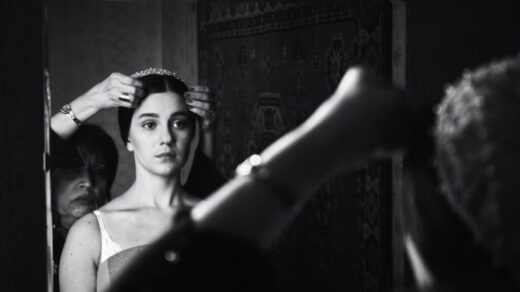The Romanov Legacy
In the annals of history, February 6, 1928, marked a peculiar and captivating moment. On this day, an ocean liner named Berengaria docked in New York, carrying with it an enigmatic young woman who embodied a combination of beauty and charm that would soon become the center of attention. This woman was on a mission that captured the imagination of many: she had traveled across continents to the United States to seek medical treatment for her jaw. However, it was not her medical condition that piqued the interest of the world, but rather her astonishing claim – she asserted that she was Grand Duchess Anastasia, the lone surviving member of the Russian Imperial family, who had miraculously escaped the horrors of their mass execution by Bolshevik soldiers. She introduced herself as Anastasia Tschaikovsky.
The Dark Shadow of the Romanovs
To understand the gravity of Anastasia’s claim, we must first delve into the tragic history of the Romanov family. Czar Nicholas II, the last reigning monarch of Russia, along with his wife Empress Alexandra and their five children, found themselves in a precarious position after being dethroned in 1917. The Bolsheviks had seized power and confiscated their wealth and possessions. The fate of the Romanovs took a sinister turn when it was revealed that pro-Czarist forces were advancing towards their place of captivity in the city of Ekaterinburg.
The Bolshevik captors, fearing a rescue mission, made a chilling decision. On a fateful night in July 1918, the Romanovs, along with four loyal servants, were herded into a room. There, they were lined up, facing a barrage of gunfire. The room filled with the acrid scent of gun smoke, but the horror did not end there. When the shooting ceased, some were still alive, their bodies bearing the brutal scars of bullets. To ensure there were no survivors, the assailants resorted to savage stabbing. Subsequently, the bodies were doused in gasoline, and in a macabre finale, they were thrown into an abandoned mineshaft and set ablaze.
Emergence of Anastasia Romanov
The story of Anastasia’s claim to identity begins in the aftermath of this brutal act. In 1920, an unidentified woman was discovered in a Berlin canal. Mysterious and unwilling to reveal her true identity, she remained a puzzle to those who encountered her. It wasn’t until two years later that she emerged from anonymity, boldly asserting that she was Grand Duchess Anastasia Romanov, the youngest daughter of the executed czar.
This woman, initially known as Anastasia Tschaikovsky, would eventually adopt the name Anna Anderson, a name that would reverberate through history. Her claim was audacious and perplexing, especially considering her body bore disfiguring wounds. Despite her injuries, there were those who found her story compelling and believed her assertions. Among her advocates was Gleb Botkin, the son of the Romanov family’s physician, who had known the Grand Duchess well.
The Battle for Recognition
As Anna Anderson began her journey to gain official recognition as Anastasia, she encountered skepticism, disbelief, and legal battles. While she exhibited both beauty and eloquence, not everyone was convinced by her narrative. The Grand Duke of Hesse, Anastasia’s uncle and Czarina Alexandra’s brother, was one such skeptic. He enlisted the services of a private investigator to uncover the truth behind Anna Anderson’s claims.
The private investigator’s findings were startling. They revealed that Anna Anderson was, in fact, a Polish-German factory worker named Franziska Schanzkowska, who had mysteriously disappeared in 1920. Her life story included a history of mental health issues and a significant work-related incident, which explained the extensive scarring on her body. These revelations were widely reported in German publications but failed to extinguish Anna’s determination. Despite numerous court cases, Anna Anderson’s claims went unvalidated, and she continued to assert her identity until her passing in 1984.
While Anna Anderson’s claims persisted, the world discovered the remains of the Romanovs. The identification process was a pivotal moment, and Prince Philip, consort of Queen Elizabeth II and a grand-nephew of Alexandra Romanov, played a crucial role. His blood donation facilitated DNA testing, which confirmed that the remains were indeed those of the Romanov family. Yet, the remains of one daughter and the sole son were conspicuously absent for decades, leaving a lingering mystery.
A Scientific Revelation
The question of Anna Anderson’s true identity continued to intrigue, with some fervently believing that she was Anastasia. Then, a breakthrough came in the form of a scientific revelation. English and American scientists conducted DNA comparisons between Anna Anderson and the Romanovs. They utilized both tissue samples and a strand of her hair. The results were unequivocal – Anna Anderson had no genetic connection to the Romanovs.
An Animated Journey Through History
“Anastasia” is an animated film that offers a fictionalized retelling of the life of Grand Duchess Anastasia Romanov, inspired by the real historical figure. Released in 1997 by 20th Century Fox and directed by Don Bluth, this animated musical takes audiences on a captivating journey. The story begins with the Russian Revolution, during which Anastasia’s family, the Romanovs, faces a tragic fate. Anastasia, the youngest daughter, narrowly escapes the execution but loses her memory in the process. Raised in an orphanage, she remains unaware of her royal heritage.
As the film progresses, Anastasia encounters two charming conmen, Dimitri and Vladimir, who believe she may be the missing Anastasia and plan to use her to claim a substantial reward. What follows is an adventure filled with heartwarming moments, breathtaking animation, and memorable songs as Anastasia embarks on a quest to rediscover her identity. Alongside her new companions, including the lovable talking bat Bartok, Anastasia sets out to reunite with her grandmother, the Dowager Empress Marie, who resides in Paris.
While “Anastasia” draws inspiration from historical events and figures, it blends these elements with creative storytelling, fantasy, and romance. The film is celebrated for its captivating narrative, beautifully animated sequences, and a soundtrack that includes the iconic song “Once Upon a December.” Despite its departure from historical accuracy, “Anastasia” remains a beloved animated classic, enchanting audiences with its magical interpretation of a historical mystery.
To put an end to the controversy once and for all, Anna’s DNA was compared to that of Karl Maucher, the great-nephew of Franziska Schanzkowska. The match was conclusive, affirming the private investigator’s findings. Thus, one of the most enduring mysteries of the 20th century reached its resolution.
In conclusion, the tale of Anastasia Romanov, the woman who claimed to be the Grand Duchess, remains a captivating chapter in history. It encapsulates the enduring allure of historical mysteries, inviting us to unravel the past, examine the evidence, and ultimately distinguish fact from fiction.



